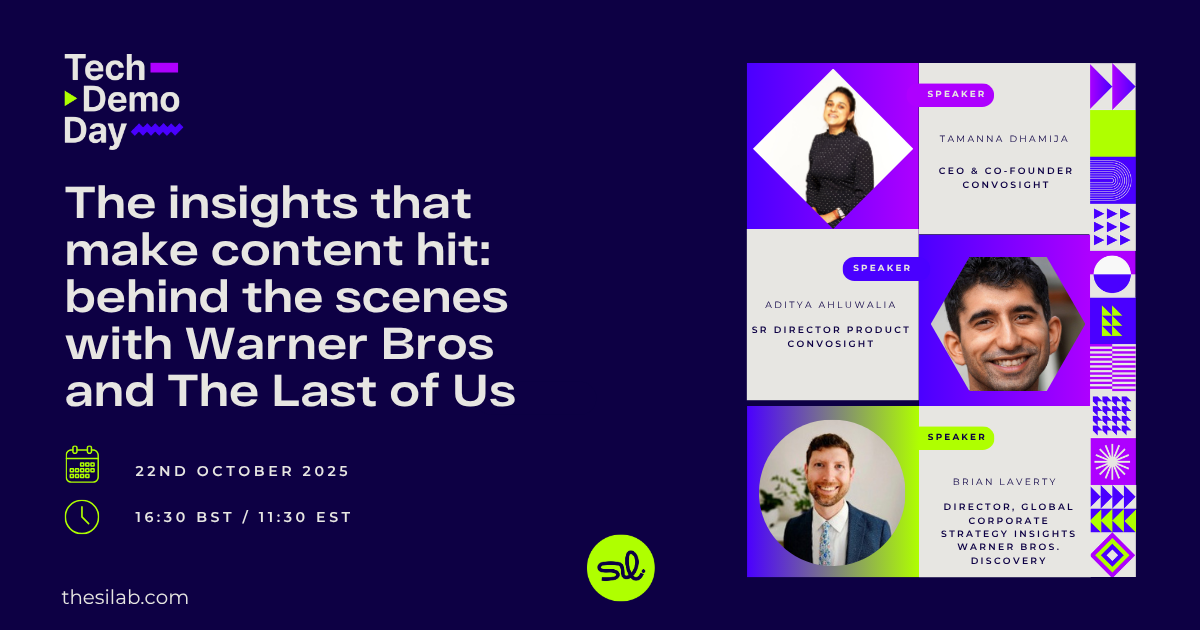
What's missing with social listening tech?
Social listening and analytics technology has evolved over the years, giving brands access to more data than ever before. But in spite of all these improvements, there are still limitations to how they can help people to do their jobs.
To get a better idea of these challenges and limitations, we took a deep dive into the topic during the 2021 SI Tech Demo Day with Samuel Flemming, Managing Director for North America for Convosphere; Adam Mills, Brand Strategy & Planning Insight Manager, BT; David Encizo, VP Marketing Technology & Operations, Social Media at Wells Fargo; Jay Owens, Research & Innovation Consultant; Kim Townend, Social Media Listening & Strategy Consultant; and Troy Janisch, Social Intelligence Director and VP for U.S Bank.
Our main focus was on answering the question – What can technology vendors do to improve their offering?

Challenges around democratisation of social data
While social listening technology can provide valuable data for businesses, there’s still significant scope for improvement. One thing that’s clear is that most tech vendors are still designing platforms with data analysts in mind, leaving businesses struggling to democratise the data. This makes it challenging for everyone to get the insights they need for their specific function.
To get a complete picture of how a business is performing, you still need to integrate social data with in-house data. There’s a need to “put that data into context so that I can show it right next to the data that is about customers inside the organisation,” according to Troy.
David highlighted a similar issue of getting the “social data out of a silo and combining it with everything else.” Tech vendors need to make the data accessible in a way that allows users to easily extract actionable insights, even for someone who’s not necessarily familiar with data analysis. “Don’t make the complexity of social data our problem; solve it for us,” he added.
Adam explained that this all comes back to “building the foundations the right way.” Democratising data doesn’t mean everyone within the organisation should have access to all of the data. Instead, there should be different layers of access based on expertise and ranking. Vendors need to build the foundational levels the right way so that businesses can have the confidence to democratise the dataset.
How can data be turned into insights?
Although there’s a desire to get democratised access to data, this becomes a problem if the desire turns into a fixation on data alone. Much of this problem isn’t with the tool itself but rather on the users and their expectations of what a tool should deliver.
Jay explained that companies tend to focus on gathering and showing the data rather than extracting the insight from it. “A dashboard doesn’t mean you’re doing anything. It doesn’t mean you’re thinking about the data. It doesn’t mean you’re making business decisions informed by the data,” she said.
To help address this problem, tech vendors should include features that let users annotate the data. This will allow them to label things, add commentary, and give more sense and context to the data.

Improvements in usability and data filtering are needed
Another big challenge is with usability of the platforms. There’s an overwhelming amount of data that can get confusing for end users. Nobody needs every single data point to perform their work. “Everybody needs a unique combination,” Troy stated. Social listening platforms could help by giving the option to curate the data down to the most critical elements for a specific dashboard and provide them in a very user-friendly way.
At the moment, analysts are spending way too much time on cleaning up data and getting to a workable dataset. This prevents them from doing their actual work. The main point, according to Sam, is to “let the experts work on the expert tech stuff; not rudimentary cleaning stuff.”
Additional challenges
Technology platforms also seem to be overlooking the needs of freelance analysts. Kim, who’s a freelancer herself, faces limitations because almost all of the tools out there are enterprise-level. She expressed her desire for vendors to make their platforms more accessible for every type of user.
Additionally, data sourcing and source coverage can also present some challenges. It’s difficult to know to what extent the data sources are covered. Sam stated the need for more transparency and more understanding in that aspect.
Whilst social listening tech has made progress over the years, there are still limitations for customers. By better understanding how businesses and analysts are using the platforms, vendors could make changes that would add significant value and help them to do their jobs more effectively.
This interview was recorded via LinkedIn Live, if you prefer to view on LinkedIn, click the button below.
View InterviewSee related content

%20(2)%20(1).png)



%20(1).jpeg)


